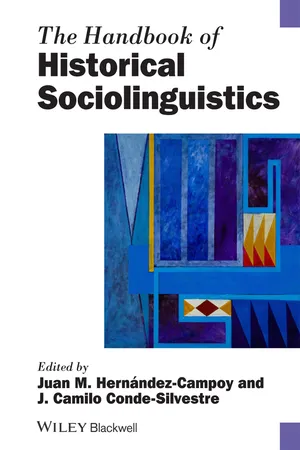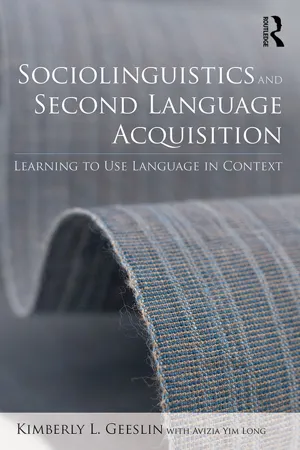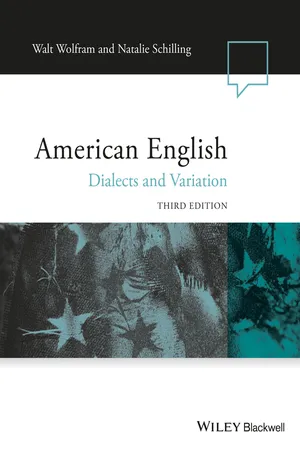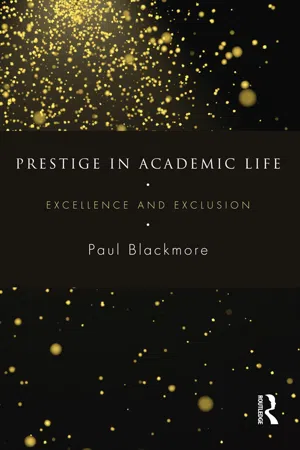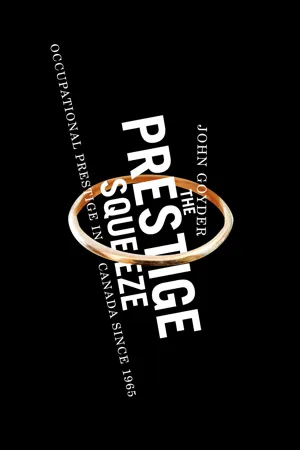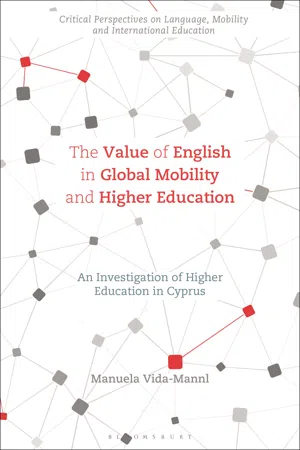Languages & Linguistics
Prestige
Prestige in the context of languages refers to the perceived value and status associated with a particular language or dialect within a society. It often influences language choices and attitudes, with speakers of prestigious languages or dialects being accorded higher social status. Prestige can impact language policies, education, and the way languages are used in various social contexts.
Written by Perlego with AI-assistance
Related key terms
Related key terms
1 of 4
Related key terms
1 of 3
7 Key excerpts on "Prestige"
- eBook - ePub
- Juan Manuel Hernández-Campoy, Juan Camilo Conde-Silvestre, Juan Manuel Hernández-Campoy, Juan Camilo Conde-Silvestre(Authors)
- 2012(Publication Date)
- Wiley-Blackwell(Publisher)
Dorian (1998) provides another perspective on the role of Prestige in language maintenance and loss by looking at the prospects of small, indigenous languages vis-à-vis dominant Prestige languages. In Dorian’s words (1998: 17), “we understand the motivating factors in language shift [to the dominant language] far better than we understand the psychosocial underpinnings of long-sustained language maintenance.” It is easy to understand that people whose language is associated with low Prestige are willing to abandon their ancestral language in favor of the dominant language, particularly if dialects or ethnic minority languages are considered poor and crude, while the standard is seen as a rich and precise instrument of rational expression. But why should people in some cases retain the ancestral language? Dorian (1998: 5) describes tolerance towards cultural and linguistic diversity as a factor favoring the maintenance of small languages and suggests that in Western Europe the beginning of the industrial age and the rise of nationalism − Baggioni’s (1997) second ecolinguistic revolution − coincide with less tolerant attitudes towards subordinate languages.6. ConclusionHow does one proceed in the reconstruction of Prestige patterns in language history? Historical research sheds light on the overtly prestigious high status groups in a given social system, and it is often possible to make hypotheses of Prestige on the level of the individual. A wide range of contemporary texts provides evidence of people’s attitudes to and awareness of languages and language varieties. But it is also necessary to determine what sort of Prestige we are tracking. For example, do we consider Prestige as a way of claiming higher status or group membership? Is the Prestige variety on the ascent, which was the case with vernacular languages in the early modern period, or on the decline, like Latin at the same time? The standard language variety is often prestigious, but it does not necessarily entail covert, identity-oriented Prestige. When carrying out, for example, micro-level research into a social network in which it may be difficult to predict the linguistic in-group signals, prestigious forms and prestigious network members may be identifiable from evidence of linguistic accommodation.Prestige is related to language change, and studies on networks can shed more light on the role of individuals in the process. For instance, innovations do not have Prestige until they are evaluated and potentially adopted by the individuals seen as opinion leaders (Rogers 1962/2003) or leaders of change (Labov 1994, 2001), a process which tends to take place in a tight-knit social network (Milroy 1980/1987; Rogers 1962/2003). Women pick up linguistic innovations (change from below) and adopt Prestige forms (change from above) at a higher rate than men (Labov 1994, 2001), which links gender to the pursuit of status-oriented Prestige, in particular, but also identity-oriented Prestige, if we accept that non-standard vernacular varieties, which have an important role in the creation and maintaining of group cohesion and membership, reflect change from below. - eBook - ePub
Sociolinguistics and Second Language Acquisition
Learning to Use Language in Context
- Kimberly L. Geeslin, Avizia Yim Long(Authors)
- 2014(Publication Date)
- Routledge(Publisher)
As mentioned in earlier chapters, one of the central pursuits of sociolinguistics is, in fact, exploring the attitudinal correlates of language forms. In other words, sociolinguists seek to understand whether a given form meets with Prestige or stigma as well as the linguistic and social contextual features that are associated with the use of that form. In sum, linguists seek to describe language as it occurs, and sociolinguists seek to understand the connection between language and other factors such as attitudes or social characteristics. Figure 9.1 contains a list of questions that illustrate how we might explore the degree to which a given variety meets with Prestige or stigma. Figure 9.1 List adapted from Bell (1976) to examine Prestige As we examine the list of questions in Figure 9.1 it becomes quite apparent that many different factors are involved in identifying the Prestige variant. In an interesting discussion of Chicano Spanish (and English), Galindo (1995) notes the importance of examining speakers’ attitudes toward their own varieties of a language and toward other varieties of the same language. Additionally, in bilingual communities, attitudes toward the dominant (or minority) language interact with the process of identifying the standard for a given speech community. These attitudes, in turn, are influenced by factors such as gender, ethnicity, and social class. In Galindo’s study, speakers noted that certain varieties were not appropriate for girls, for example. In fact, all of the sociolinguistic variables examined in earlier chapters are intricately related to the variety of a language we choose to speak and to the linguistic norms of a given speech community. In particular, Galindo notes that there are both intraethnic attitudes and interethnic attitudes, and in order to understand the norms for a given community we must consider both of these - eBook - ePub
American English
Dialects and Variation
- Walt Wolfram, Natalie Schilling(Authors)
- 2015(Publication Date)
- Wiley-Blackwell(Publisher)
Not all linguistic constraints have equal weight, as their effects may be ordered with respect to each other. In other words, some constraints are more important than others in their relative effect on the fluctuation of forms. The investigation of linguistic constraints on variability reveals the subtle and complex ways in which dialect differences are systematically structured. This complexity is, of course, a far cry from the common popular perception that dialects are rather haphazard and that vernacular speakers randomly “drop consonants” when they talk.6.6 The Social Evaluation of Linguistic Features
Linguistically, no linguistic structures are superior or inferior to others. At the same time, it is not surprising that social values assigned to certain groups in society will be associated with the linguistic forms used by speakers from these groups. If, for example, rural Southerners are viewed as uneducated, then the vowel merger of pin and pen associated with Southern speech will be taken as a sign of this lack of education.SOCIALLY PRESTIGIOUS variants are forms that are positively valued through their association with high-status groups or formal, institutionalized contexts as linguistic markers of status, whereas SOCIALLY STIGMATIZED variants carry negative connotations through their association with low-status groups or informal situations of use. In addition, as discussed above, linguistic features can carry a range of social meaning other than stigma or Prestige, including broadly based regionality, membership in locally based practice groups, character traits like “authenticity” or “authoritativeness,” and interactional stances such as considerateness or uncooperativeness.In grammar, most Prestige forms in American English are related to prescriptive or hyper-prescriptive norms, or even literary norms. For example, the use of whom in Whom did you see? or the sentence-initial placement of the adverb never in Never - eBook - ePub
Prestige in Academic Life
Excellence and exclusion
- Paul Blackmore(Author)
- 2015(Publication Date)
- Routledge(Publisher)
Many of the Prestige concerns that can be identified today have existed for a very long time. The past may often seem a more stable place, with clearer, more widely shared and less contested views of what was prestigious than in what is experienced as the teeming present. An account of Prestige becomes more difficult. Prestige exists most comfortably at times of stability rather than change. It could be argued that the conception of Prestige includes the idea of stability, so that part of the art of developing Prestige today is in projecting a sense of stability whilst remaining contemporary in a time of change. At the same time as serenity is projected, Prestige is often won and maintained through fierce struggle, and can be lost as well as gained. Defining Prestige Prestige is a term in wide and common use, but is not easy to define or to locate. James English, exploring contemporary growth in literary prizes, asks some key questions: ‘Where does Prestige reside? In things? In people? In relationships between things and people?’ (2005, 3). Prestige does not reside in a person, although a role or function that a person has or performs may be prestigious. Thus there is Prestige inherent in a kingship or a presidency that is separable from the holder of the role. A person may have attributes or possessions or achievements that lend Prestige. Similarly, nothing of itself can be prestigious. Prestige is a social phenomenon, conferred by those who hold something in esteem. Prestige requires more than one person to value something. A group of people must agree if it is to acquire that status. That group does not have to be large, and prestigiousness does not require the agreement of everyone in a community. It needs only enough people to form a body who share particular valuations. Indeed, as will be suggested later, one way of estimating the boundaries of a community is by noting where a shared agreement of what is deemed prestigious breaks down - eBook - ePub
- Martin Montgomery(Author)
- 2008(Publication Date)
- Routledge(Publisher)
It is often presumed that certain patterns of pronunciation become preferred within a speech community because they are inherently more correct, or because they are intrinsically more pleasing to listen to. Available evidence, however, points in a quite contrary direction and suggests that there is nothing in a sound itself that can guarantee a Prestige status for it. Instead it is social evaluation solely that confers Prestige or stigma upon certain patterns of pronunciation. For one thing the Prestige form of one language area can turn out to be the stigmatized form of another. The Prestige form of pronunciation in New York may well include an audible /t/ sound after a vowel in words such as ‘car’, ‘north’, ‘guard’, but in Britain the audible inclusion of this sound in this position can merely sound rustic or even comic, being primarily associated with the patterns of pronunciation of rural south-west England. For another thing, speaker’s unfamiliar with the language in question often have the greatest difficulty discriminating between one form of pronunciation and another, never mind identifying the Prestige pattern. Among French speakers, for instance, Parisian French is generally held to be more prestigious than French Canadian. Non-French speakers, however, cannot even tell the difference between them, let alone display a consistent preference for one or the other. So there are no purely linguistic grounds for preferring one form of pronunciation to another. It is primarily a matter of social attitude: the speech patterns of the dominant social group come to be regarded as the norm for the whole society, though this normative pressure may often be rationalized in terms of aesthetic appeal or by reference to false notions of linguistic propriety.Accents as a Residue of Earlier Dialect DifferencesWhat we have been considering, in effect, is the accent aspect of dialect differences, where ‘accent’ as a term is exclusively reserved for whole patterns of pronunciation typical of a particular region or social group. The term ‘dialect’ covers a broader range of differences, including not only matters of pronunciation, but also distinctions in vocabulary and sentence structure. The extension of a language (say, English) through space and through time allows for quite fundamental differences to emerge and exist side by side within the whole, as its speaker’s move and settle, shape it to express new experiences, and it comes into contact with other languages. It will be changing continuously, but at differing rates within the sub-communities of the English speech community. Some of these changes will be instigated locally but many of them will spread out in waves from centres of power and influence, moving probably from city to city first, and then only later and more slowly encompassing the intervening rural areas. It is the varying and uneven rates of change actually ‘on the ground’, so to speak, that make dialect differences inevitable. None the less, if the hold of the centre on the periphery is strong (through, for example, uniform legal, administrative, educational and writing systems) then, despite the fact of language change, there will be strong pressures in the direction of linguistic conformity. Thus, within the British Isles many of the more fundamental differences of vocabulary and sentence structure between the English dialects have become eroded (not to mention, of course, the drastic decline – sometimes active suppression – of Welsh and Gaelic). Often, all that remains as a kind of historical residue of the original dialect is its distinctive mode of pronunciation – its accent. For this reason, we now have a situation in which the standard dialect is spoken with many differing regional accents. - eBook - ePub
Prestige Squeeze
Occupational Prestige in Canada since 1965
- John Goyder(Author)
- 2009(Publication Date)
- McGill-Queen's University Press(Publisher)
In reversal of the concept of power begetting Prestige, Le Bon (1960[1895], 130) maintained that “Prestige is the mainspring of all authority.” Prestige seeps out of the culture and proceeds to exert consequences. Seeing Prestige as a source of power is not, we should note, just some quaint remnant of classical sociology. Feldman and Thielbar (1972, 235) achieved some success with asking undergraduate respondents to rank ten occupations, differentiating by power, privilege, and Prestige, sub-differentiating by what is, against what should be. “[P]restige justifies what degree of power should be exercised and what privileges are due,” they concluded. In another example, from Sandefur (2001, 384), writing in an early-twenty-first-century issue of the American Sociological Review : “Prestige is a particularly potent basis for the form of power that resides in influence.” The context behind this quotation was a study of Prestige gradations within the legal profession. The focus on one occupation may make the reciprocal causation between power and Prestige easier to see than in theorizing about the entire labour force. Le Bon was alert to the unpredictable, conjuring-trick-like quality of Prestige. “Prestige in reality is a sort of domination exercised on our mind by an individual, a work, or an idea. This domination entirely paralyzes our critical faculty, and fills our soul with astonishment and respect” (1960[1895], 130). Dictionary definitions reflect the duality being noted here. From the Oxford English Dictionary (OED), Prestige implies “blinding or dazzling influence,” with the connotation of “illusion,” or “a conjuring trick.” Webster in contrast, sees Prestige more prosaically as “reputation or influence arising from success.” Veblen’s (1965 [1899]) famous old classic showing how behaviours often make little sense aside from their quirky and subtle Prestige implications is consistent with the conjuring theme - eBook - ePub
The Value of English in Global Mobility and Higher Education
An Investigation of Higher Education in Cyprus
- Manuela Vida-Mannl(Author)
- 2021(Publication Date)
- Bloomsbury Academic(Publisher)
Heller 1994 : 7). The fact that English is increasingly valued, and hence used, in the field of HE reflects its benefit for this field to maintain its power. As power equals the summation of various forms of capital, the value of English must bring capital to the field of higher education. As Bourdieu’s capital is, at its root, always economic, and consequently directly translatable into money, the value of English is essentially monetary. When applied to the context of Cyprus, the use of English is irrevocably interwoven with the economy in both parts of the island. Bourdieu’s theoretical framework offers guidance for a specific understanding of the value of English in Cyprus since it enables a description of power relations based on the value of language.2.3.2 Social Mobility and Social ClassSocial structures are often expressed via social class, which is only one axis of the prevalent societal division into subgroups. People are labeled and differentiated in terms of, for instance, gender, race, religion, nationality, and social class. All these categorizations differentiate people and function as identity dimensions (Block 2015 : 3). In addition to gender and race, social class is a major operator of separation and hierarchization and essential for the production of social power relations (Kergoat 2010 : 63–5). It is relational, constructed via the comparison of social actors (Wright 2015 : 33). “Social class is a multi-dimensional construct [and] classes are not merely economic phenomena but are also profoundly concerned with forms of social reproduction and cultural distinction” (Savage et al. 2013 : 223). Block names eleven key dimensions of social class, including property, wealth, occupation, education, symbolic behavior, mobility, and life chances (2015: 3). In these dimensions, a clear shift from the Marxist view of labor-based class divisions toward a social stratification based on Prestige, status, and different capital is reflected (cf. Leung 2017
Index pages curate the most relevant extracts from our library of academic textbooks. They’ve been created using an in-house natural language model (NLM), each adding context and meaning to key research topics.
Explore more topic indexes
Explore more topic indexes
1 of 6
Explore more topic indexes
1 of 4
